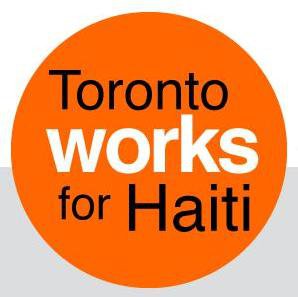 There’s this one women’s washroom in a restaurant (which shall remain nameless) here in Belleville that really irks me. I’m a pretty small woman, but the narrow L-turn in the hallway leading into it, bookended by two doors which open in the wrong directions, makes it really difficult to maneuver. Everytime I go through this obstacle course I think, “What would I do if I were in a wheelchair?” It’s ridiculous.
There’s this one women’s washroom in a restaurant (which shall remain nameless) here in Belleville that really irks me. I’m a pretty small woman, but the narrow L-turn in the hallway leading into it, bookended by two doors which open in the wrong directions, makes it really difficult to maneuver. Everytime I go through this obstacle course I think, “What would I do if I were in a wheelchair?” It’s ridiculous.
But it illustrates a good point: How easy is it for people with disabilities to access your business?
As you may, or may not know, January ushered in the dawn of a new era of Accessibility for Ontarians with disabilities. Under the Accessibility for Ontarians with Disabilities Act, 2005, the government has taken it upon themselves to develop standards of accessibility, and to enforce them.
It’s about time. It boggles the mind that in 2010, people with disabilities still do not have equal access to services, employment, transportation, and information. But all of that is about to change, and the first target for reformation is the world of customer service.
As of January 10, 2010, all public service sector organizations (ie. government, hospitals, school boards) must be in compliance with these standards. By January 2012, everyone else has to be on board.
The standards include things like enacting policies and procedures for providing goods and services to people with disabilities. It also encompasses training staff and volunteers in accessibility issues. Another key element of these standards is in regard to communication: website accessibility.
What is website accessibility?
Many people with disabilities rely on computers and the internet as sources of communication. Assistive devices, such as screen readers, speech input systems, and others operate with their software to provide an optimal experience. Making your website accessible means that it is built to be compatible with these tools.
There are different levels of accessiblity for the web. Most businesses with be able to stop at the ‘A’ level, but others, like our awesome clients, Pathways to Independence, will want to take it a step further. It all depends on what your site is doing, who it’s reaching, and how accessible you feel you need to be (it would be pretty cool if everyone was at ‘AAA,’ but maybe someday.)
We here at Engine have been talking about website accessibility for awhile. You can check out a quick slideshow presentation we did on the topic on our Slideshare site.
In the meantime, consider the implications for your business. Check out the following resources:
Ministry of Community and Social Services, Ontario – AccessON
WorldWideWeb Consortium – Web Accessibility Initiative
Wikipedia – Web Accessibility
Feel free to call, email, tweet or Facebook us with any questions you might have. We’d be happy to help!












 Today is one of those days when I’m amazed by the connections, and opportunities for community building and business, that social media allows. I’m even more awestruck by being surrounded by so many people working passionately for the cause of Haiti.
Today is one of those days when I’m amazed by the connections, and opportunities for community building and business, that social media allows. I’m even more awestruck by being surrounded by so many people working passionately for the cause of Haiti.


 There’s this one women’s washroom in a restaurant (which shall remain nameless) here in Belleville that really irks me. I’m a pretty small woman, but the narrow L-turn in the hallway leading into it, bookended by two doors which open in the wrong directions, makes it really difficult to maneuver. Everytime I go through this obstacle course I think, “What would I do if I were in a wheelchair?” It’s ridiculous.
There’s this one women’s washroom in a restaurant (which shall remain nameless) here in Belleville that really irks me. I’m a pretty small woman, but the narrow L-turn in the hallway leading into it, bookended by two doors which open in the wrong directions, makes it really difficult to maneuver. Everytime I go through this obstacle course I think, “What would I do if I were in a wheelchair?” It’s ridiculous.
